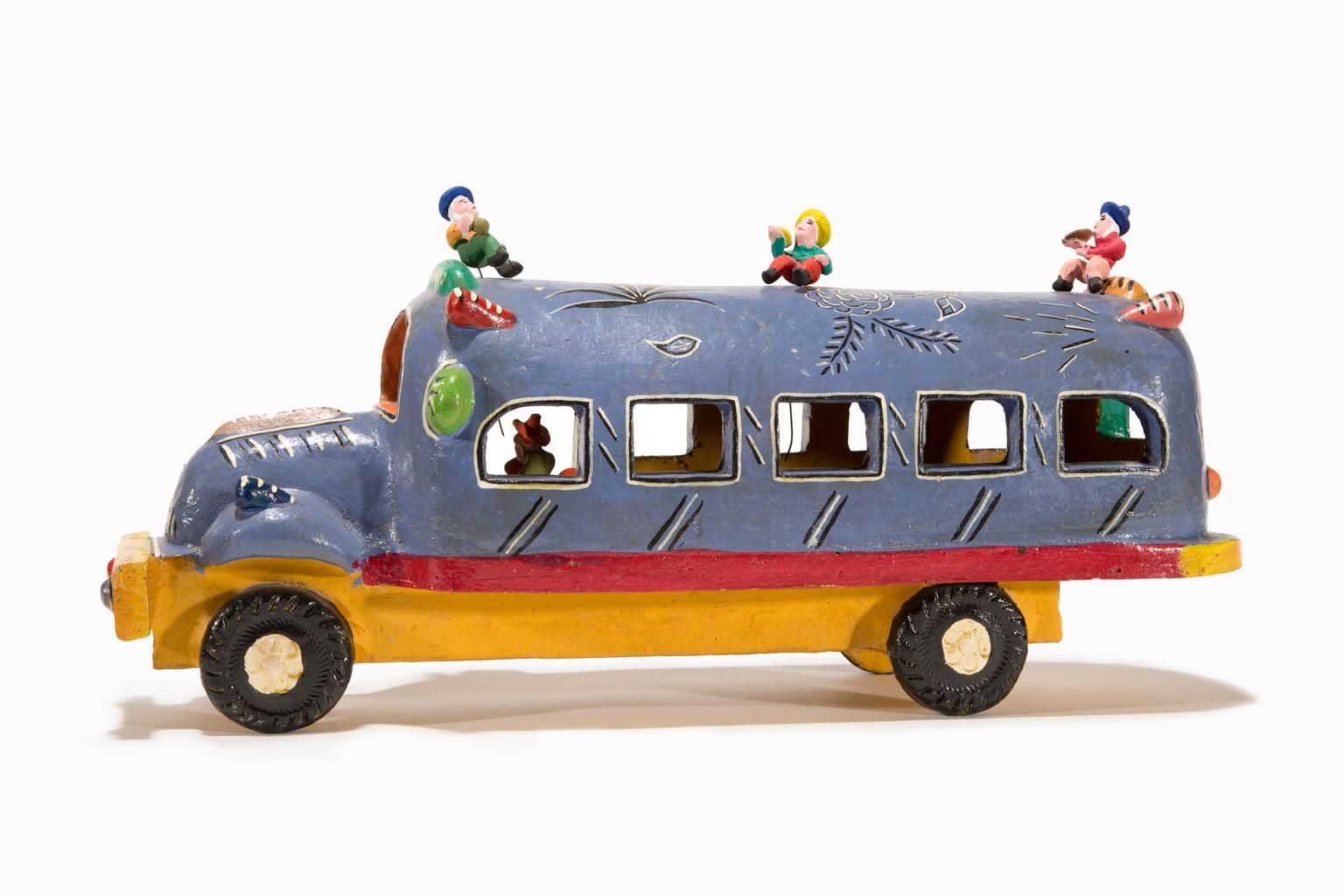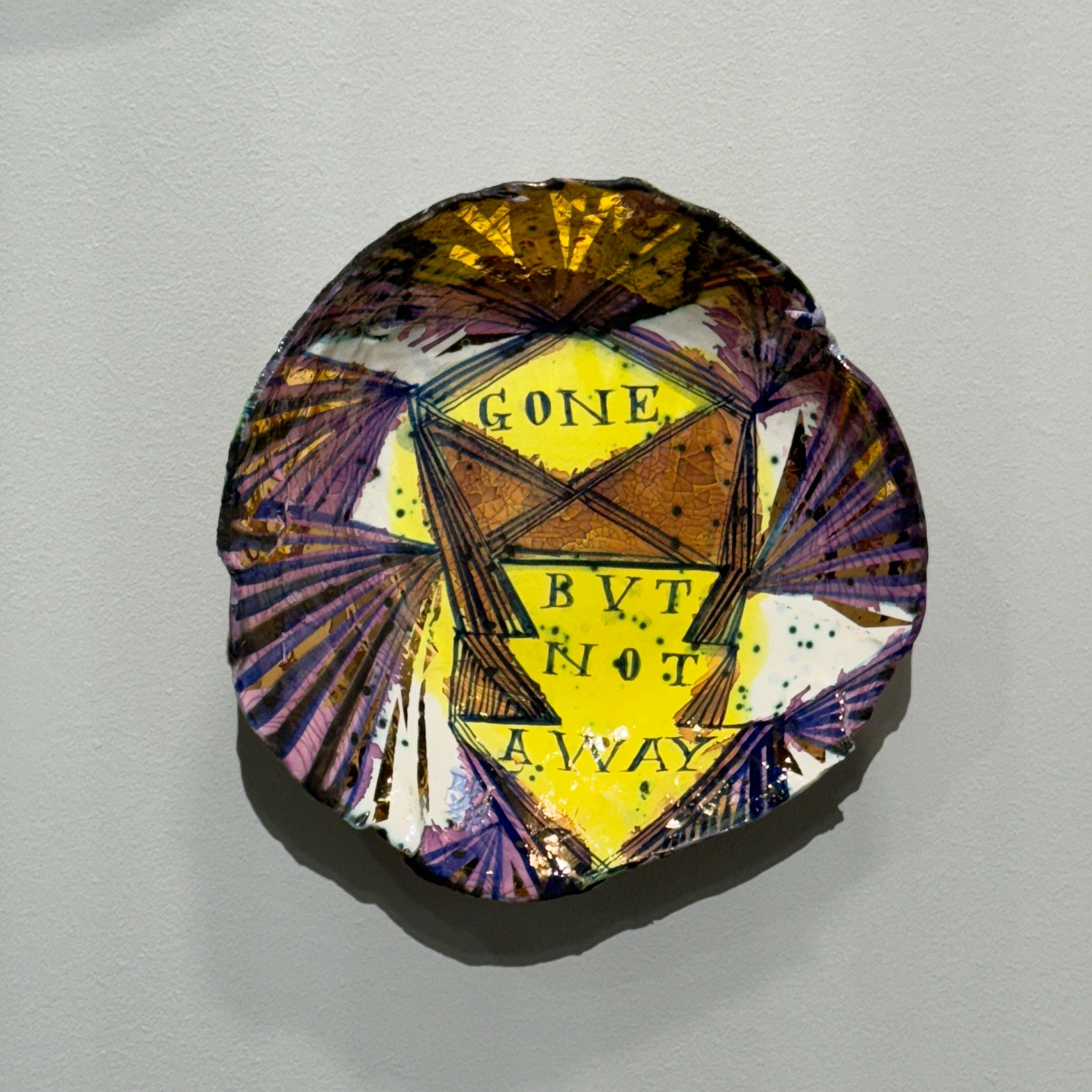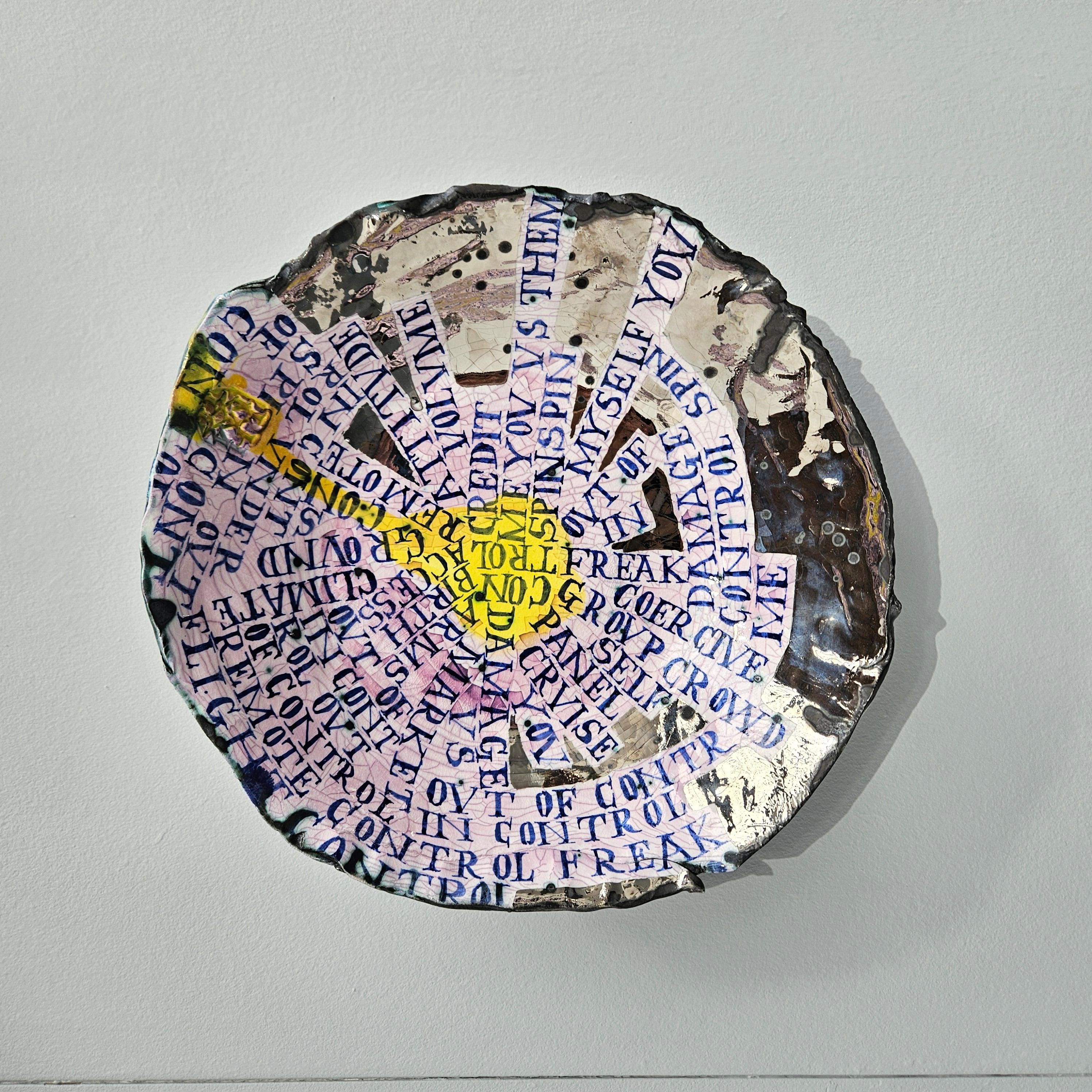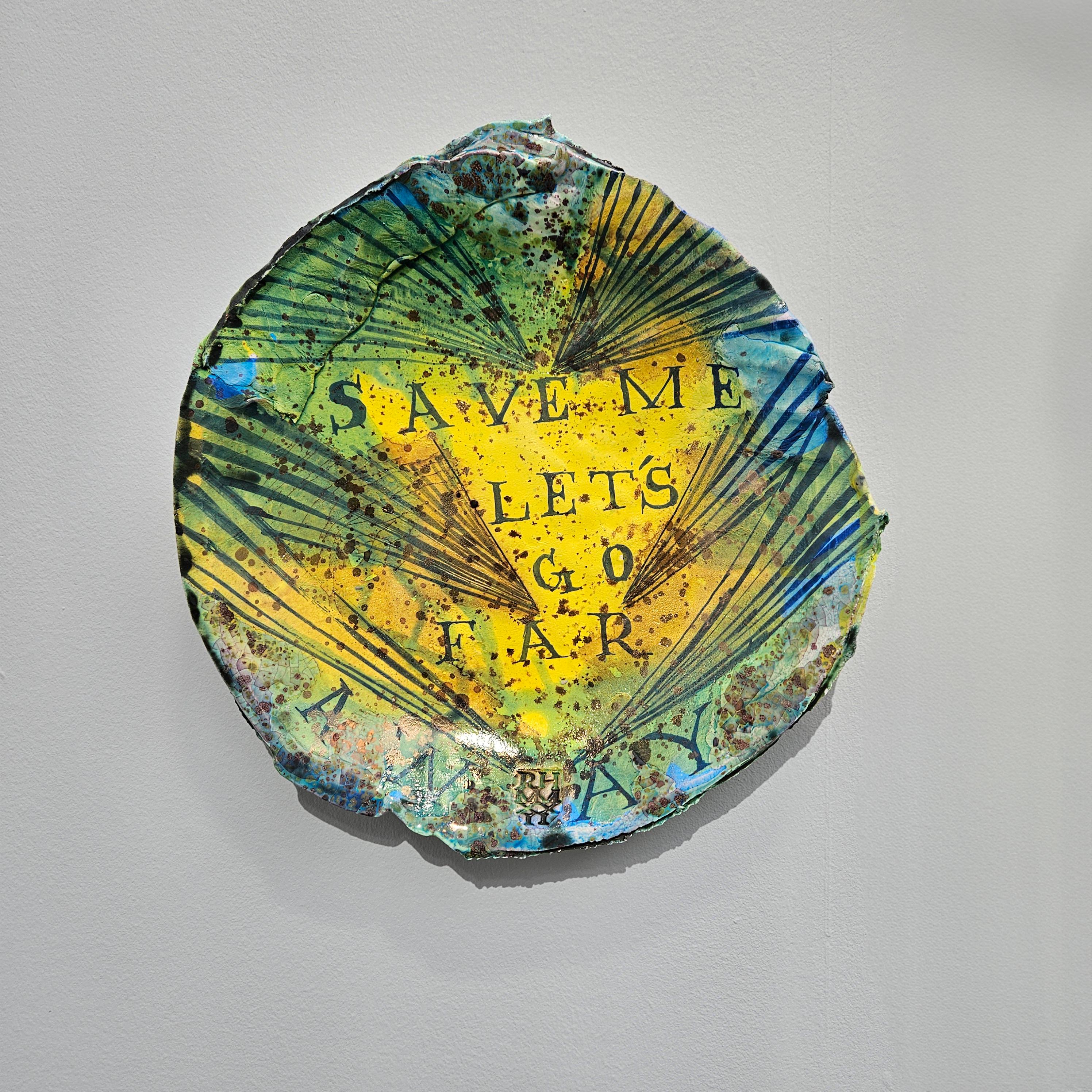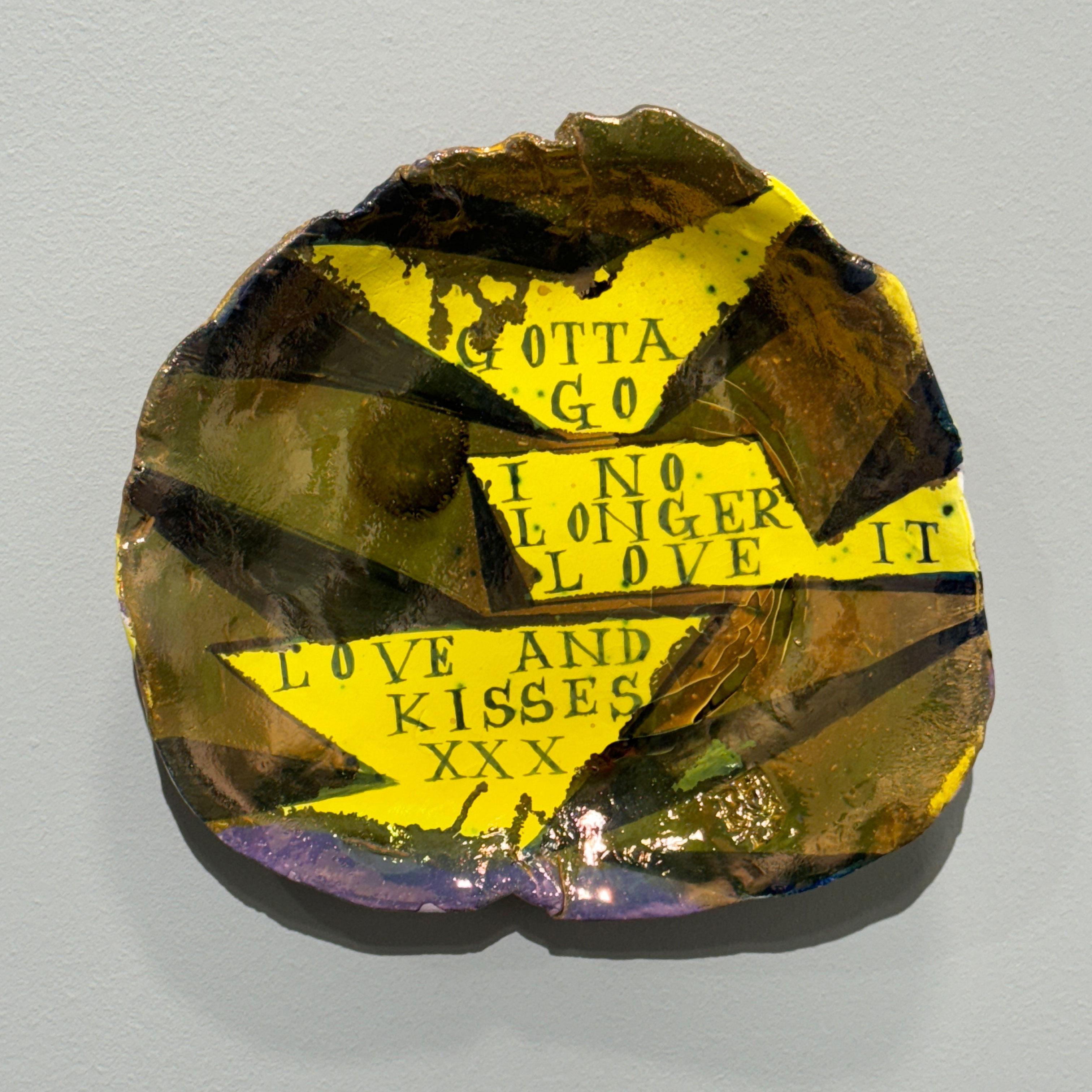Items Similar to "El Tren" Ceramic, Glaze, Colors, Mexican Folk Art, Four Sections
Want more images or videos?
Request additional images or videos from the seller
1 of 9
Candelario Medrano"El Tren" Ceramic, Glaze, Colors, Mexican Folk Art, Four Sections1950s
1950s
About the Item
SALE ONE WEEK ONLY
"El Tren" is a whimsical and playful rendition of a train. It is beautifully glazed in various colors.
This particular ceramic was from the collection of Jane and Richard Knight’s Estate. Jane Knight was a famous fiber and textile artist. Richard was a photographer who worked for Eliel Saarinen and Alexander Girard. The Knights and Girard became close friends and it was Girard who gifted “Santa Cruz De Las Huertas Jalisco” to the Knights. Alexander Girard left his personal collection to the Museum of International Folk Art, Santa Fe, NM. The Girards eventually amassed a collection of more than 106,000 objects from across the globe. Their 1978 gift of this collection to the Museum of International Folk art quintupled the size of their collection and prompted the construction of a new wing, which opened in 1982 and houses a mere 10% of the Girard Collection in the permanent exhibition Multiple Visions: A Common Bond, which was designed by Alexander Girard himself. This collection includes numerous multiples and is notable for its great breadth, including traditional arts, popular arts, and paper ephemera. “I believe we should preserve this evidence of the past, not as a pattern for sentimental imitation,” Girard once said, “but as nourishment for the creative spirit of the present.” Indeed, folk art was an important inspiration for Girard’s design work.
The renowned Candelario Medrano is recognized as one of the top figural ceramists in Mexico. He lived in Santa Cruz de las Huertas in the state of Jalisco, one of the largest pottery-producing states in Mexico. He started out making hand-made sewer pipes as did many other people in the village, but as the adopted son of Julian Acero, the top ceramic toy maker in the village, Medrano soon learned to create his highly individualized pieces and eventually created many ceramic pieces.
His boldly imaginative work included Noah's arks, churches, merry-go-rounds, jet planes, whimsical castles, bandstands, churches, slim apartment buildings, circus tents, arks, owls, animals, boats, trains, buses, taxis, and cars. Some of these pieces would be populated with groups of happy people, oftentimes with very expressive faces.
Another unique expression was the production of his nagual who was dual in nature. He was your animal protective spirit or the boogie man. All of these were painted in wonderfully bright colors. Medrano still remains a celebrated master of folk ceramics and his work continues to be collected around the world.
His sons Serapio Medrano and Benito Medrano have continued working clay; so have his grandchildren Juan Jose Ramos Medrano and Maria Medrano. Also related is Gerardo Ortega Lopez who developed his own style of folk art in clay.
Individual pieces are measured at 5.82" x 6.82" x 3.50"; 4.50" x 4.5" x 3.50"; 4.50" x 4.50" x 3.50"; and 4.50" x 6 x 3.50".
- Creator:Candelario Medrano (1918 - 1986)
- Creation Year:1950s
- Dimensions:Height: 6 in (15.24 cm)Width: 21.5 in (54.61 cm)Depth: 3.5 in (8.89 cm)
- Medium:
- Movement & Style:
- Period:
- Condition:
- Gallery Location:Detroit, MI
- Reference Number:1stDibs: LU128617424332
About the Seller
5.0
Vetted Seller
These experienced sellers undergo a comprehensive evaluation by our team of in-house experts.
Established in 2014
1stDibs seller since 2019
95 sales on 1stDibs
Typical response time: 4 hours
- ShippingRetrieving quote...Ships From: Detroit, MI
- Return PolicyA return for this item may be initiated within 14 days of delivery.
More From This SellerView All
- “Santa Cruz de las Huertas Jalisco”, Ceramic, Glaze, Colors, Mexican FolkartLocated in Detroit, MISALE ONE WEEK ONLY “Santa Cruz de las Huertas Jalisco” is a whimsical, charming and colorfully ceramic rendition painted blue and red of a local bus that traversed the town where the artist Candelario Medrano...Category
Mid-20th Century Folk Art Figurative Sculptures
MaterialsCeramic, Glaze
- "Pod", Decorative Tatooed Sculptural Ceramic with Transparent GlazeBy Michele Oka DonerLocated in Detroit, MI"Pod" is a precious sculpture with a decorated tactile surface and a warm glaze giving the piece a soft glow. The transparent glaze enhances the creamy tones of the clay. Ms. Oka Doner created unique hand-size sculptures during the 1960s of which the "Pod" is an exquisite example. Her clay technical skills cover a wide range from enormous wall pieces to small decorative pieces that demand to be touched and held. This piece, despite being a fruit, is the perfect example of her famous "Tatooed" figurative sculptures. Michele Oka Doner (born in Miami Beach, Florida, United States) is an American artist and author who works in a variety of media including sculpture, prints, drawings, functional objects and video. She has also worked in costume and set design and has created over 40 public and private permanent art installations. She is best known for her “A Walk On The Beach,” a one and a quarter mile long bronze and terrazzo concourse at Miami International Airport. It is composed of over 9000 bronzes embedded in terrazzo with mother-of-pearl. At one and quarter linear miles, it is one of the largest artworks in the world. She is granddaughter of painter, Samuel Heller. She attended the University of Michigan, Ann Arbor. Her art instructor Milton Cohen was experimenting with The Space Theater and George Manupelli began the Ann Arbor Film Festival. Their students were engaged in poetry, dance, light, music, all combined into a unitary vision, a motif that shaped Oka Doner's student years and is characteristic of her work today. She participated in a Manupelli experimental film, a "Map Read" performance with art drawing instructor Al Loving and Judsonite dancer Steve Paxton as well as several "Happenings." Another influence was art historian and Islamic scholar, Oleg Grabar, who illustrated how patterns in architecture are able to dissolve space. She received her BS and MFA from the University of Michigan in Ann Arbor. In 2008 she was a U of M Penny Stamps Distinguished Speaker. Solo exhibitions of her work have been held at the Detroit Institute of Arts, Michigan; Germans Van Eck Gallery, New York; Diane Brown Gallery, New York; Art & Industrie Gallery, New York; Willoughby, Marlborough Gallery, New York; Studio Stefania Miscetti in Rome; and Gloria Luria Gallery in Miami, Florida. During the 1960s Michelle Oka Doner was living and working in Detroit, Michigan, where she became acquainted with Charles McGee and his gallery located in the Fisher Building...Category
1960s Still-life Sculptures
MaterialsCeramic, Glaze
- Palissy Majolica Bowl Snake Spider Frog Caterpillar Butterfly LizardLocated in Detroit, MIThis Jose A Cunha Portuguese Palissy Majolica plate features a snake, spider, frog, caterpillar, and butterfly on green shredded clay ground. The piece bears the maker's marks for Jose A Cunha pottery. Palissy ware is a style of ceramics that is also known as rusticware due to their earth-toned palettes and naturalistic plant and animal scenes that are cast to it. The style was coined in reference to the 16th century French potter Bernard Palissy and experienced a significant revival in the 19th century thanks to Charles-Jean Avisseau. It's strongest revival however was in Portugal where it was produced by the potteries of Mafra, Jose A. Cunha, Alves, José Francisco de Sousa...Category
19th Century Still-life Sculptures
MaterialsGlaze, Earthenware, Majolica
- Michael German "Leroy & Bertha's Bar and Grill" Mixed Media Sculpture Folk ArtLocated in Detroit, MISALE ONE WEEK ONLY During the 1960s America’s storytelling sculptor, Michael Garman, lived a vagabond lifestyle on the cheap and in the run-down neighb...Category
Mid-20th Century Folk Art Still-life Sculptures
MaterialsMixed Media
- "Kryptonite Wares", Found Objects 2015/2019, Chartreuse & Red, House PaintLocated in Detroit, MISALE ONE WEEK ONLY "Kryptonite Wares" is a clever and humorous collection of both superfluous and everyday objects purchased from the Dollar Store. It is a wry comment by the artist...Category
2010s Assemblage Still-life Sculptures
MaterialsPlastic, House Paint, Wood, Found Objects, Lights, Mixed Media
- "Barcus Burlwood Vase I" Turned Burlwood Polished Rough, Glass InsertLocated in Detroit, MIThis turned Burlwood vase has rich earth tones with copper highlights. The swirling burl pattern comes through the glossy surface that contrasts with the...Category
1970s Modern Still-life Sculptures
MaterialsWood
You May Also Like
- Aladåb (á la daube)Located in Oslo, 03Glazed Stoneware SculptureCategory
2010s Contemporary Still-life Sculptures
MaterialsStoneware, Glaze
- Gone but not awayLocated in Miami Beach, FLRuan Hoffmann uses ceramic earthenware as his preferred medium. Ruan Hoffmann chooses familiar objects such as plates as his canvases, however the resulting works are not presented a...Category
2010s Still-life Sculptures
MaterialsCeramic, Porcelain, Glaze
- ControlLocated in Miami Beach, FLRuan Hoffmann uses ceramic earthenware as his preferred medium. Ruan Hoffmann chooses familiar objects such as plates as his canvases, however the resulting works are not presented a...Category
2010s Still-life Sculptures
MaterialsCeramic, Porcelain, Glaze
- Save me let's go farLocated in Miami Beach, FLRuan Hoffmann uses ceramic earthenware as his preferred medium. Ruan Hoffmann chooses familiar objects such as plates as his canvases, however the resulting works are not presented a...Category
2010s Still-life Sculptures
MaterialsCeramic, Porcelain, Glaze
- Gotta goLocated in Miami Beach, FLRuan Hoffmann uses ceramic earthenware as his preferred medium. Ruan Hoffmann chooses familiar objects such as plates as his canvases, however the resulting works are not presented a...Category
2010s Still-life Sculptures
MaterialsCeramic, Porcelain, Glaze
- I should have told you that I loved you more oftenLocated in Miami Beach, FLRuan Hoffmann uses ceramic earthenware as his preferred medium. Ruan Hoffmann chooses familiar objects such as plates as his canvases, however the resulting works are not presented a...Category
2010s Still-life Sculptures
MaterialsCeramic, Porcelain, Glaze
Recently Viewed
View AllMore Ways To Browse
Vintage Ceramic Glazed
Vintage Section
Four Art Pieces
Retro Colors 1950s
Ceramic Glazed Top
Mexico Folk
Four Gifts
Life Size Ceramic
Mexican Jalisco
Ceramic Painted In Mexico
Ceramic Face Sculpture
Vintage Cars 1950S
Vintage Ceramic House
Retro Mexican Folk Art
Castle Sculpture
Girard Vintage
Life Size Ceramic Sculpture
Folk Art Church
